According to the soulful lyrics of Summertime*, “-the livin’ is easy, fish are jumpin’ and the cotton is high,” but for cotton farmers in West Texas, autumn is the time when the livin’ is busy, the strippers are runnin’, and the cotton is loaded and off to the gin.
By the time it occurred to me that this year’s crop deserved to be discussed, many of the fields had already been stripped; where green cotton stalks had stood, white and loaded with fluffy white bolls, now defoliated naked brown stalks surrounded large nubby white rectangular modules strung out like a new housing development. But I found a few shots to share with you to give you an idea of what a good cotton crop looks like in the field.
Mike Riley at Central Compress in Sudan said cotton farmers were experiencing sort of a perfect storm this year. They enjoyed good rains with only a little loss from hail and rain, which produced good yields. Overseas production was down due to bad weather in China and Pakistan and other cotton-producing countries, so the cotton supply was low-remember the theory of supply and demand? So the price is really good, $1.30-1.50 a pound, which is unheard of since $.50 is pretty standard and $1.00 is considered high. A bale of cotton is typically around 500 pounds, so do the math. It’s going to be a banner year for cotton farmers who have done their homework and their fields are producing lots of modules.
Module Truck Conventional Wisdom says a farmer can expect eight bales of cotton to a module, give or take, and there is no telling how many modules are being gathered per acre this year. The tally is still out since the stripping is not finished. And then there are variables to consider: variety of cotton planted; who stripped and how thorough they were; who ginned it, which all plays a part in how much cotton winds up in the module and then the bale.
The cotton is stripped by the cotton stripping machine, dumped into the boll buggy, which is then dumped into the module builder. Many loads are pressed into a module, then loaded into the module truck and taken to the gin to be processed into a cotton bale.
Cotton is dumped into the module builder, from which large pressed rectangular blocks of cotton are formed and taken to the gin.
The modules are lined up as they wait to be ginned.
Muleshoe Co-op Gin is one of the area ginning facilities.
So I think it will be safe to predict, with apologies to songwriters Gershwins and DeBose, that Ma may be good-lookin’, but Daddy’s definitely gonna be rich, so cotton-farmer babies, you won’t need to cry.
“Summertime,” from the opera Porgy and Bess. Lyrics and music by Heyward DeBose, George and Ira Gershwin; 1935.
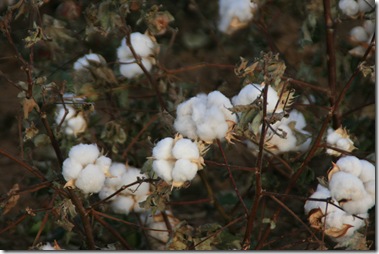
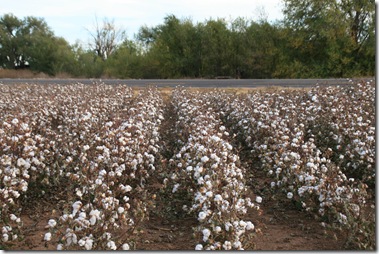

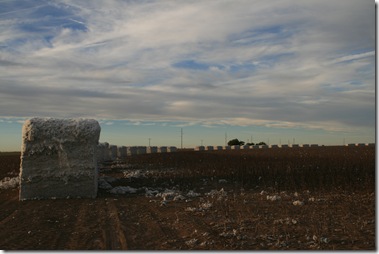
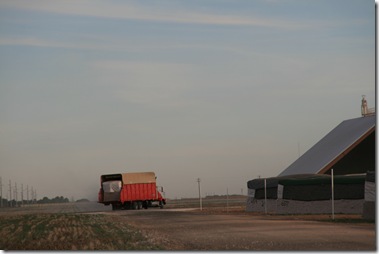

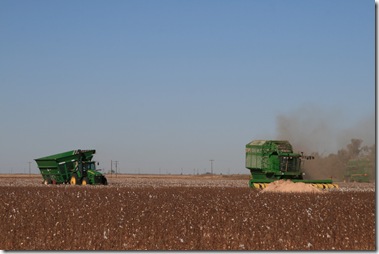
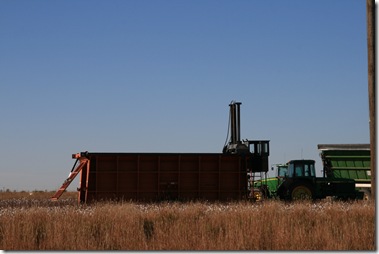
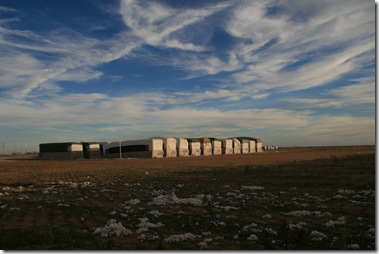

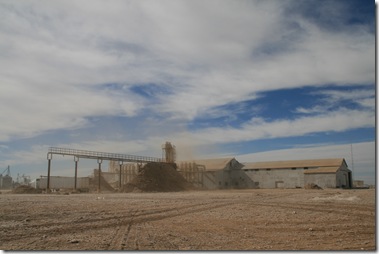
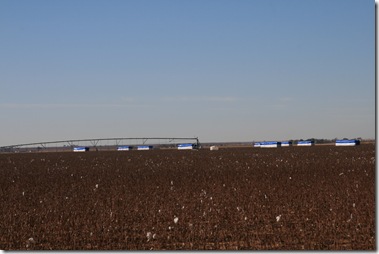
Thanks for sharing. I have heard how good it is this year, but its nice to have some pictures to see!
You are welcome! I had a hard time taking only a few pictures. The modules are everywhere and the temptation is to take more and more shots-each new group seduces me into thinking I should take one more picture, and another, and…